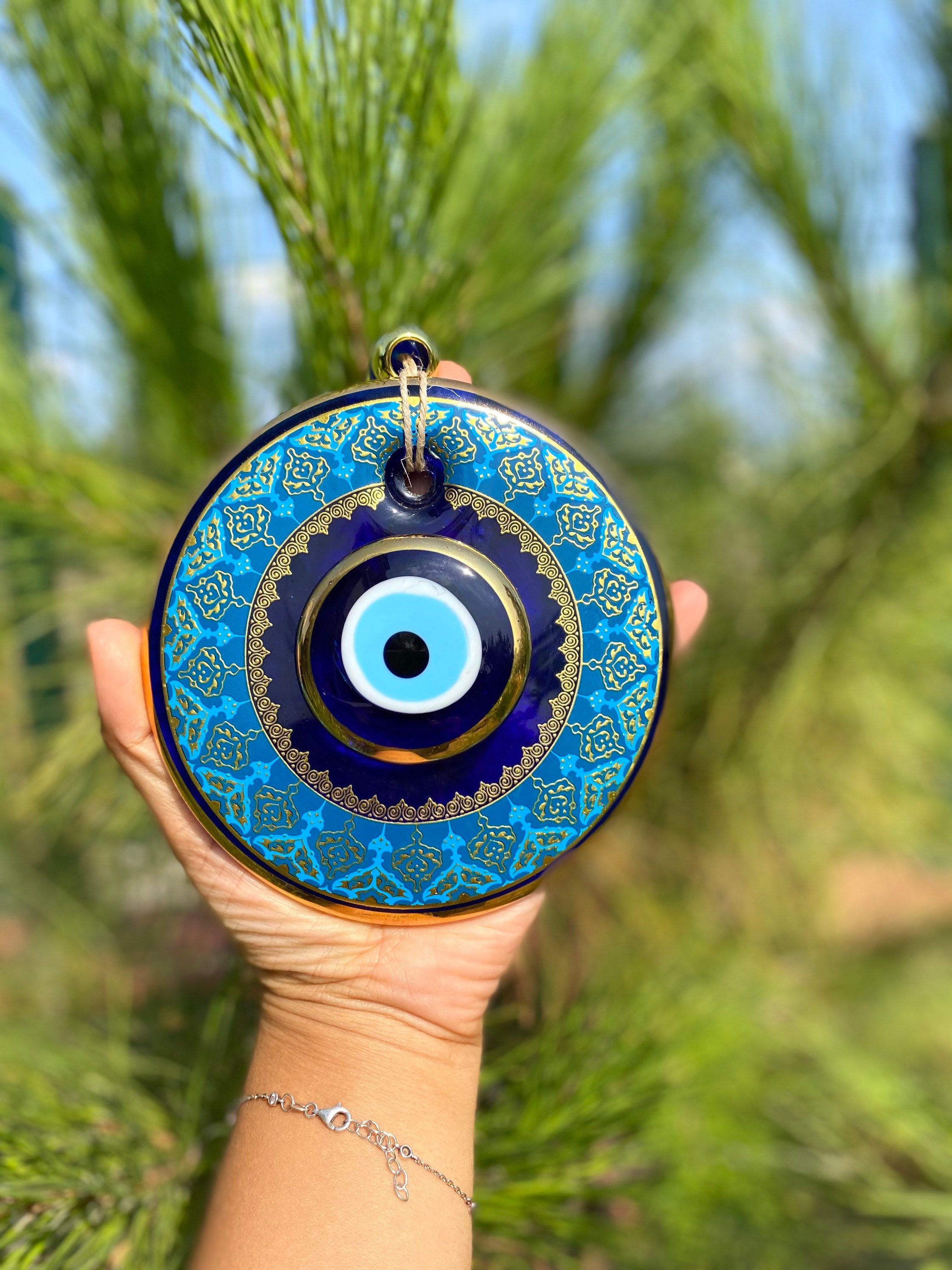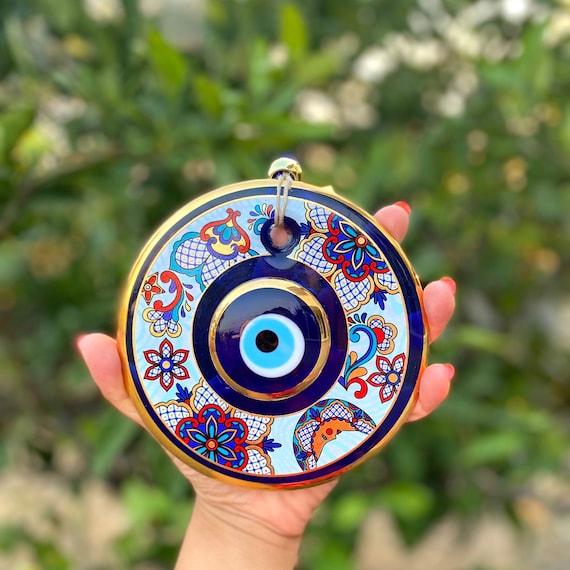Introduction to Evil Eye Decor
The allure of evil eye decor is not just in its vibrant colors, but in its rich cultural history and symbolic meanings. As someone who has personally embraced this unique style in my home, I can attest to its aesthetic appeal and the protective sentiments it embodies. In this article, we’ll delve into the world of evil eye decor—its origins, meanings, and how you can incorporate it into your living spaces.
What is the Evil Eye?
The evil eye is a symbol found in many cultures worldwide, believed to protect against negative energies and ill-wishing. Often depicted as a blue eye, it’s thought to ward off harm and bring good fortune to its bearer. Let’s explore its various interpretations through history and culture.
Historical Background of the Evil Eye
The concept of the evil eye dates back thousands of years, with roots in ancient Greece, Rome, and even early Hindu texts. According to these beliefs, receiving envy or malice from others could result in misfortune or disaster. Thus, the evil eye symbol serves as a talisman to counteract this negativity.
Cultural Significance Across the World
From the Mediterranean to the Middle East, the evil eye has different meanings and forms. Here are some notable examples:
- Turkey: The “Nazar” or blue bead is a common protective symbol.
- Greece: Known as “mati,” this symbol is often worn as jewelry.
- Italy: The “Malocchio” represents the evil eye and is often countered with charms like cornicello.
- India: In Hindu culture, the “Nazar Battu” is used to ward off negative energy.
Types of Evil Eye Decor
There are numerous styles and formats for evil eye decor, allowing for varied personal expression. Below are some popular types:
1. Wall Hangings
Wall hangings featuring the evil eye are a popular choice, often made from ceramic or glass. They can serve as striking focal points in your home.

2. Jewelry
Evil eye jewelry, including necklaces, bracelets, and earrings, allows you to carry the protective symbol with you wherever you go, making it a personal talisman.
3. Decorative Objects
From figurines to coasters, decorative evil eye objects can also add a touch of style while serving their protective purpose.
4. Textiles and Fabrics
Many artisans create textiles that feature the evil eye motif, such as cushions, throws, and curtains—perfect for adding a cozy, protective ambiance to your space.
Incorporating Evil Eye Decor into Your Home
Wondering how to seamlessly integrate evil eye decor into your home? Here are practical tips based on my experience:

1. Entryways
Placing an evil eye wall hanging near your entryway can serve as a guardian against any negative energies entering your home.
2. Living Room
Consider incorporating decorative objects with the evil eye motif in your living room. A ceramic evil eye bowl can be a unique centerpiece.

3. Bedrooms
Hang an evil eye charm above your bed to promote a sense of peace and protection during sleep.
4. Outdoor Spaces
Even your outdoor spaces can benefit from evil eye decor! Garden stakes or hanging ornaments can add a whimsical touch while protecting your space.

Pros and Cons of Evil Eye Decor
| Pros | Cons |
|---|---|
| Aesthetic Appeal and Colorful Designs | May clash with certain home decor styles |
| Symbol of Protection and Positive Energy | Misinterpretation or cultural appropriation concerns |
| Versatile Decorative Options | Quality varies greatly among products |
Caring for Your Evil Eye Decor
Keeping your evil eye decor in excellent condition is essential for both its aesthetic and symbolic purposes. Here are some tips:

1. Regular Cleaning
Dust your evil eye items regularly to maintain their vibrancy. Use a soft cloth to avoid scratching delicate surfaces.
2. Placement Considerations
Avoid placing your evil eye decor in areas prone to damage, such as high-traffic zones or near windows where it may get direct sunlight all day.

3. Repairing Damage
If your evil eye decor gets chipped or damaged, consider repairing it or purchasing a new one to preserve its protective qualities.
Conclusion
The incorporation of evil eye decor in your home not only adds a unique touch of style but also serves as a protective symbol against negativity. Embracing this decor style can deepen your connection to your home’s environment, reflecting a personal narrative of protection and good fortune. Whether you’re drawn to its symbolism or simply its beauty, evil eye decor can make a meaningful addition to your living spaces. Now, are you ready to bring the protective eye into your home?
FAQs About Evil Eye Decor
1. What does the evil eye symbolize?
The evil eye symbolizes protection against envy and negative energies. It is believed to ward off misfortune and bring good luck.
2. How can I incorporate evil eye decor into my home?
You can use wall hangings, jewelry, decorative objects, and textiles that feature the evil eye motif to enhance your home decor.
3. Is evil eye decor culturally appropriate?
When using evil eye decor, it’s essential to respect its cultural significance and be aware of the context in which you incorporate it to avoid cultural appropriation.
4. Where should I place my evil eye decor for the best effect?
Common placements include entryways, living rooms, bedrooms, and even outdoor spaces to maximize its protective qualities.
5. How do I care for evil eye decor?
Regular cleaning, careful placement, and prompt repairs will help maintain the vibrancy and symbolic integrity of your evil eye decor.